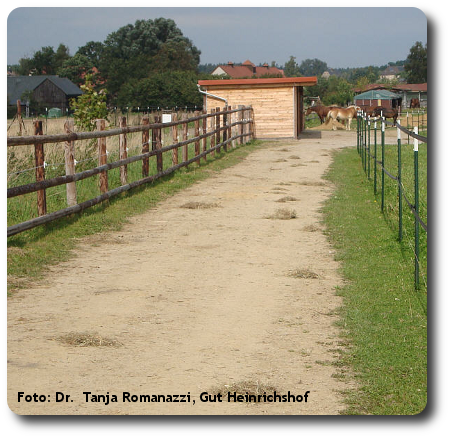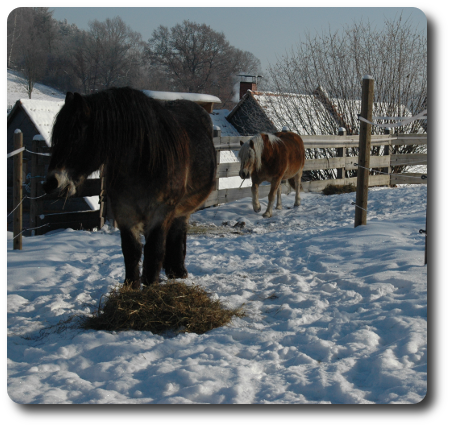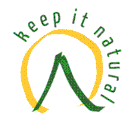
The Paddock-Trail concept
The basic idea is traced back to Jaime Jackson and his concept "Paddock Paradise" that has been published in 2006. Jackson encouraged all readers of his book of the same title to test and develop his suggestions. However, by now it is not allowed to use the name without certification and all the guidlines must be realised exactly to get the permission for using the term "Paddock Paradise". It is a pity as it hinders the extensive spread of a really good approach at the disadvantage of the animals.
Anyway - "Paddock Trail" represents an open concept for horse keeping. Important aspects like species-appropriate nutrition and ground conditions have been added and it has been adapted to central-European respectively German circumstances.
What is it about exactly?
The following considerations form the background:
- Horses are motional animals, so they need a lot of movement to be healthy and mentally balanced. The largest part should be in walk - sound feral horses show us, that 15 - 30 kilometres per day are a rather perfect performance.
- Horses are flight animals driven by fear - which means that safety has a high priority to survive. In nature the herds accomplish safety by using consistently the same tracks within their territory - the trail.
- Horses are animals who eat constantly - to stay healthy they need about 16 to 18 hours roughage eating per day .
- Horses live in free nature - day and night - 365 days a year - not in stables or stalls .
From these over many years confirmed observations a horse keeping concept has been derived, that differs fundamentally from conventional horse keeping on pastures and in stalls.
Doing concretely what?

Based on the thought of continually walking the same trails and the demand to reach an appropriate movement performance, a system of tracks / trails is being installed. This is achieved most simply by providing trails instead of the previous plain. In the simplest case this means just an inner fence in a few metres distance to the outer fence. This is how an endless track is generated and in the middle area there's space to hay, play and for controlled grazing.
The created trail has to be free of vegetation - otherwise it would be without effect. The horses start to move around to find food. This is provided at different hay feed stations which encourages the animals to move around.
It is also important to seperate food and water as far as possible from each other - this is how moving around is stimulated continually.
The ground of the trails should have the same character like the terrain on which the horses are trained - above all the horses often should find hard ground as the horses hooves are made for hard ground.
Further information and offers
There is a wealth of further information about this topic. Offers for special workshops and forums to interact with like-minded people. Below you'll find a small selection of links:





